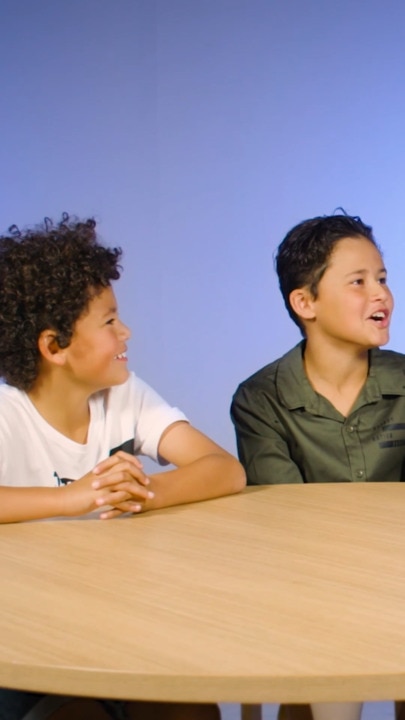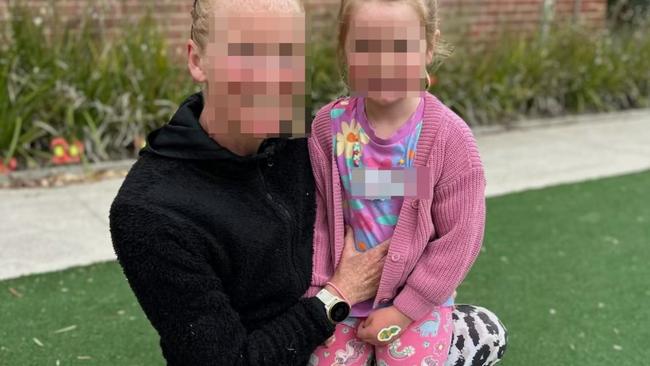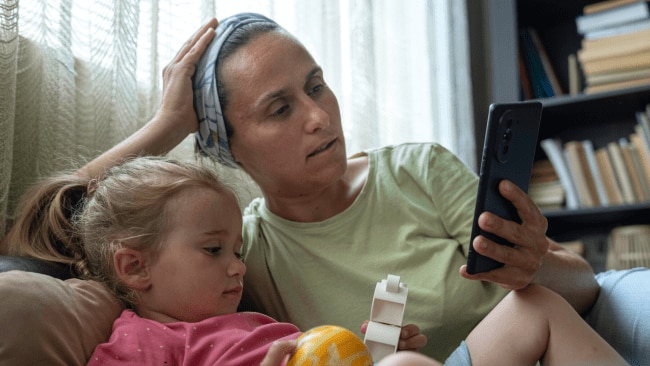'I could offer her $1 million and she can't talk. Selective Mutism is real'
"Kids with SM can be bossy, well-spoken, loud, engaged and have normal functioning academics, but when they’re in the selective setting, they completely shut down."

Parenting
Don't miss out on the headlines from Parenting. Followed categories will be added to My News.
When *Bec’s daughter Maddie started three-year-old kinder, she realised pretty soon that her little girl was struggling.
Every day on the way to kinder, Maddie would vomit and for the whole of term one, she never uttered a word to anyone.
Not to her educators. Not to the other children. Nobody.
Now, Bec wants to raise awareness of their experience to help other families.
RELATED: Little Aoife was on the waiting list of every OT within 90 minutes of us - we'd lost hope
"Just separation anxiety?"
Initially, Bec thought it was just separation anxiety.
“The kinder was really supportive of my daughter and myself,” she said. “They said she was just shy and she would get better. There was no pressure to talk and they made sure the kinder sessions were tailored to her needs, like being able to use hand cues or facial expressions to be included.”
As the months passed, the behaviour persisted and Bec grew increasingly concerned.
Not only was Maddie not talking at kinder, but she also never ate the lunches Bec packed for her. Later, Bec found out this was because Maddie was unable to open the lunchbox and couldn’t find the words to ask someone to open it for her.
Maddie’s kinder teacher identified some red flags, but told Bec it was out of her area of expertise.
“She wasn’t showing any signs of Autism Spectrum Disorder – she was still engaged, she was playing and participating, she was just non-verbal,” said Bec.

RELATED: My daughter got a therapy dog; surprisingly he loves me too
"Can I have a croissant?"
Interestingly, outside of kinder, Maddie was completely different. She would chat to her friends confidently and was well-spoken.
It was only in certain settings that she became non-verbal – at kinder, ballet and swimming.
“We could go into a bakery and she could confidently say ‘can I please have a ham and cheese croissant?’ and she’d be fine,” said Bec.
“But if we went into a restaurant and the waitress said, ‘what would you like?’ she would freak.”
When Maddie started four-year-old kinder, Bec had hoped that the behaviour might change, as she was older and more confident, but it continued.
“We would go to kinder with a towel on her chest and she would vomit on the way,” said Bec. “It was horrible. We’d get out of the car, put her in new clothes, take her in, and she would cry.
“I probably would have just pulled her out and not sent her to kinder, but then I would pick her up and she would have had a great day and loved being there.
"Going through kinder was very challenging, as Maddie wouldn't talk. The kinder staff were amazing - they pulled out all the stops and worked very hard to help support Maddie. Eventually the head teacher shared that they were out of their depth and specialist intervention was required."
"The selective mutism diagnosis was a relief"
Bec started the process to see a specialist in March, but only got a diagnosis in September.
In the meantime, one of Maddie’s teachers taught her Australian sign language (AUSLAN), and that enabled Maddie to be able to communicate her needs at kinder.
When the specialist diagnosed Maddie with Selective Mutism (SM), Bec felt enormously relieved.
“I cried happy tears because I knew that I would be listened to, and I knew that she would get the help she needed,” said Bec.
“The school would have to listen. Everyone along the way would have to listen.
“Once you’ve got a diagnosis, you’ve got something to explain yourself.”
Children with Selective Mutism (SM) can’t talk in certain places, with certain people or during certain social activities. It’s more than being shy – SM is an anxiety disorder.
It commonly strikes at preschool or school. In other settings, children can speak comfortably.
Psychological and behaviour therapies, plus support at home and school, can help children overcome speaking difficulties.
For Bec, she’d suspected SM for some time. “A shy kid can be comfortable and is usually shy all the time, whereas a kid with SM is the life of the party when they’re comfortable,” she explained.
“They can be bossy, well-spoken, really loud, really engaged and have normal functioning academics, but when they’re in the selective setting, they completely shut down.
“I identified the difference between a kid that’s just shy or quiet. Her behaviour was atypical.”
Maddie is now seeing a psychologist and speech therapist weekly, and is showing signs of progress.
She will be starting primary school in 2025, and Bec is working hard with the school and Maddie’s medical team to ensure she gets the support she needs.
Bec’s message to other parents with concerns is to get onto it early, as getting a diagnosis can take some time.
“In our case, it started two years ago and we thought we’d give her time to settle, but we probably should have actioned it then when she was younger, because it probably would have made a bigger difference,” said Bec.
“I also would say to research SM to know what to say and how to say it.
“We started out by saying, ‘if you do this today and you’re really brave, this will be your reward’, but kids with SM don’t work with rewards because they’re not in control – they have a condition where they just freak out.
“It doesn’t matter how brave she is. I could offer her $1 million and she cannot talk.
“Understanding it and advocating for them are crucial.”
More information on Selective Mutism can be found on the Raising Children Network website.
* The names in this article have been changed for privacy reasons.
More Coverage
Originally published as 'I could offer her $1 million and she can't talk. Selective Mutism is real'




